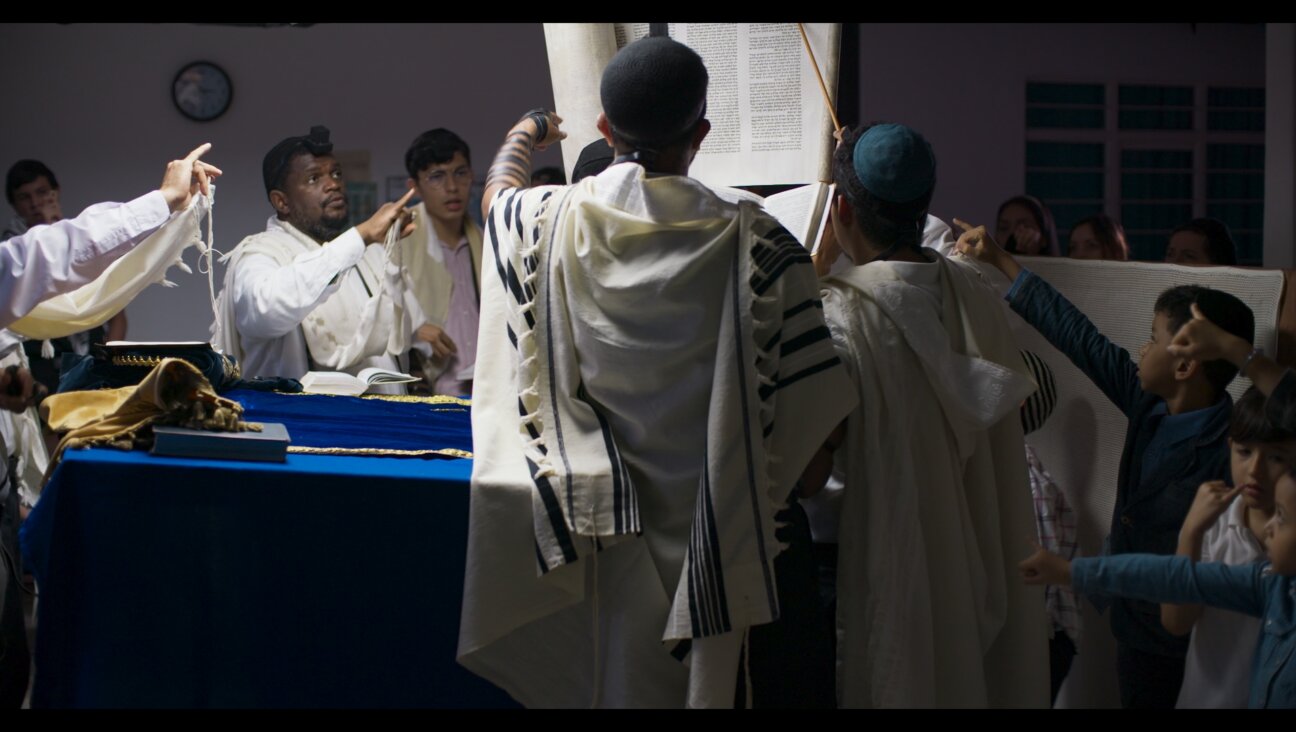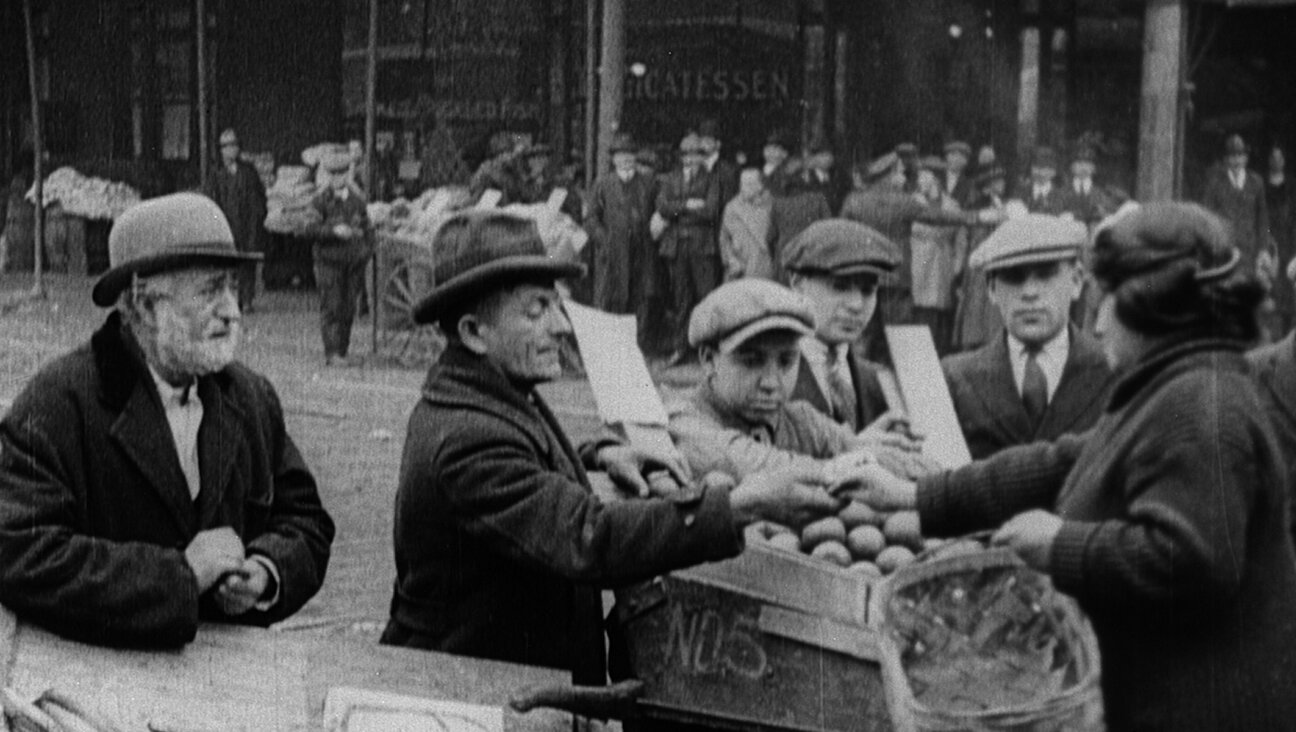Reconsidering Louis Ginzberg’s Legendary ‘Legends of the Jews’

Return of a Classic: The legacy of Louis Ginzberg’s “Legends of the Jews” is discussed in a new volume edited by Galit Hasan-Rokem and Ithamar Gruenwald. Image by Wayne State University Press
Louis Ginzberg’s Legends of the Jews: Ancient Jewish Folk Literature Reconsidered
edited by Galit Hasan-Rokem and Ithamar Gruenwald
Wayne State University Press, 224 pages, $44.99
The legacy of the Talmudist Louis Ginzberg exemplifies the benefits of lovability in Jewish studies. Those familiar with the life of Henrietta Szold (1860-1945), founder of Hadassah and Ihud, the political party in Mandate Palestine, are aware of Szold’s unrequited passion for Ginzberg, which ended sadly for her when he married another woman. Szold cotranslated part of Ginzberg’s “Legends of the Jews,” (1909-1938; in six volumes plus an index by Boaz Cohen). The work was eventually published over three decades and widely reprinted in different editions. If any work of stunning erudition can be called loveable, then surely Legends retains this allure.
Ginzberg felt that his work on a commentary of the Jerusalem Talmud was a higher achievement, but generations of readers have relished the “Legends” for what one reviewer, Solomon Gandz, praised as a “smooth, harmonious narrative which even the layman can enjoy as a pleasant reading matter.” The laudatory review by Gandz an historian of science, was published like most other commentary, after the whole project had appeared. Ginzberg clearly inspired widespread affection. A necrological note by Louis Finkelstein (1895-1991), leader of the Jewish Theological Seminary, after Ginzberg was “called to the Academy on High, the yeshibah shel maalah, of Rabbinical tradition,” noted:
“The world of his boyhood, as well as the world of the Talmud, became alive and vibrant in the stories Professor Ginzberg related. The astonishingly broad repertoire of touching and witty tales with which he would regale his guests at the Sabbath and festival table, as well as his pupils in class, were reminiscent of the teachers of the Talmud itself. The stories were told with such simplicity children loved to listen, and with such profundity that scholars would find that the time had been well spent.”
More than just a raconteur, Ginzberg incarnated other cherishable virtues, as Finkelstein concluded: “Those who saw Louis Ginzberg in his home, in the classroom, walking through the street, working in his study, praying in the synagogue, when he left them felt they had parted from a saint, even as they had lost the foremost teacher of their time.”
Such was the reverence felt for Ginzberg that when an affectionate memoir, Louis Ginzberg: Keeper of the Law, was written by his son Eli, some readers grumbled at the revelations that on Shabbat, despite his piety, Ginzberg would answer telephones and ride elevators.
So although some contemporary critics, notably Bernhard Heller in “The Jewish Quarterly Review” (July 1933) offered detailed amplifications or suggestions about the “Legends,” the work and its author have attracted ecstatic praise. Which makes “Louis Ginzberg’s Legends of the Jews: Ancient Jewish Folk Literature Reconsidered” unusual for offering conceptual criticism of Ginzberg’s methodology. Coedited by Galit Hasan-Rokem, professor of folklore emerita at the Hebrew University of Jerusalem and Ithamar Gruenwald, professor emeritus of Jewish philosophy at Tel Aviv University, this new book derives in part from a colloquium at the fifteenth Congress of the World Association of Jewish Studies in August 2009.
It contains insightful, informative chapters by David Golinkin, professor of Jewish Law at Jerusalem’s Schechter Institute of Jewish Studies, and Johannes Sabel, who is coediting the first publication of the original text of the “Legends,” written in a mix of German and English, since the author wrote it with the express intention of having it translated into the latter language under the auspices of the Jewish Publication Society. The weightiest of these chapters is by Gruenwald, “The Legend about The Legends: Methodological Observations on Ginzberg’s The Legends of the Jews.” As an historian of religion, Gruenwald faults the absence of documentation about this discipline in Ginzberg’s work. In a preface, Hasan-Rokem usefully sums up Gruenwald’s complaints, accusing Ginzberg of “blurring the boundaries between the canonical text of the Hebrew Bible and later texts. According to Gruenwald this introduces a real change in the basic definition of scripture, resulting in a ‘conceptual umbrella’ of Legends that may create an impression that aggadah is Scripture and Scripture is aggadah.”
While these putative scholarly failings may mislead some readers, Ginzberg was above-board about his own method in “Legends”: “When several conflicting versions of the same legend existed, “Ginzberg wrote, I gave only one in the text, reserving the other one, or the several others, for the Notes, or, when practicable, they were fused into one typical legend, the component parts of which are analyzed in the Notes…my main effort was to offer a readable story and narrate an interesting tale.” In 1938, Gandz explained how this fusion resulted in a “smooth, harmonious narrative which even the layman can enjoy as a pleasant reading matter.”
In doing so, Ginzberg was following the tradition of itinerant agadists of ancient times, described by Gandz as “combining the preacher and story-teller in one person, [who] brought variety, new life and passion into […] a new, much expanded, embellished and dramatized form of the saga. Each of these religious story-tellers tried to attract the people to his synagogue by telling them a great deal more about their heroes and patriarchs than was written in the Scripture. Each of these homiletic minstrels tried to develop, to enrich, to expand and to embellish the old stories till they became more moving and edifying, more amusing and entertaining.”
While purists, historians of religion among them, may disdain Ginzberg’s approach, part of the continuing charm of Legends derive from these pleasurable sources, which sought to seduce and allure. Already in 1909, Ginzberg cautioned readers: “The teachers of the Haggadah… were no folklorists, from whom a faithful reproduction of legendary material may be expected.”
Pleasure may not be an admitted primary goal of academic folklorists, let alone historians of religions. Hasan-Rokem and Gruenwald’s book is dedicated to the memory of Dov Noy (1920-2013), the Israeli folklorist and ethnologist. An eminent expert, Noy could sternly exclude what did not pertain to his discipline. I well recall an evening at Noy’s apartment in Israel in the late 1970s when a group of invited students sang folksongs, accompanying themselves on the guitar. When one misguided soul ventured to sing “Rozhinkes mit Mandlen” (Raisins and almonds) composed by Abraham Goldfaden in 1880 as part of his musical work “Shulamis,” Noy sneered and spit out the words, “Yiddish theater!”
Technically correct about objecting to classifying the touching lullaby “Rozhinkes mit Mandlen” among older folksongs, Noy put a temporary critical damper on the festivities. Likewise, whether or not Ginzberg’s work creates a “conceptual umbrella” noxious for specialists seems to be principally a concern for party-poopers. As Ginzberg noted, “The Legends of the Jews” was compiled for general readers — not specialists — and will likely continue to inspire readers with love and affection, just as the author himself did during his lifetime.
Benjamin Ivry is a frequent contributor to the Forward.
A message from our Publisher & CEO Rachel Fishman Feddersen

I hope you appreciated this article. Before you go, I’d like to ask you to please support the Forward’s award-winning, nonprofit journalism so that we can be prepared for whatever news 2025 brings.
At a time when other newsrooms are closing or cutting back, the Forward has removed its paywall and invested additional resources to report on the ground from Israel and around the U.S. on the impact of the war, rising antisemitism and polarized discourse.
Readers like you make it all possible. Support our work by becoming a Forward Member and connect with our journalism and your community.
— Rachel Fishman Feddersen, Publisher and CEO
























